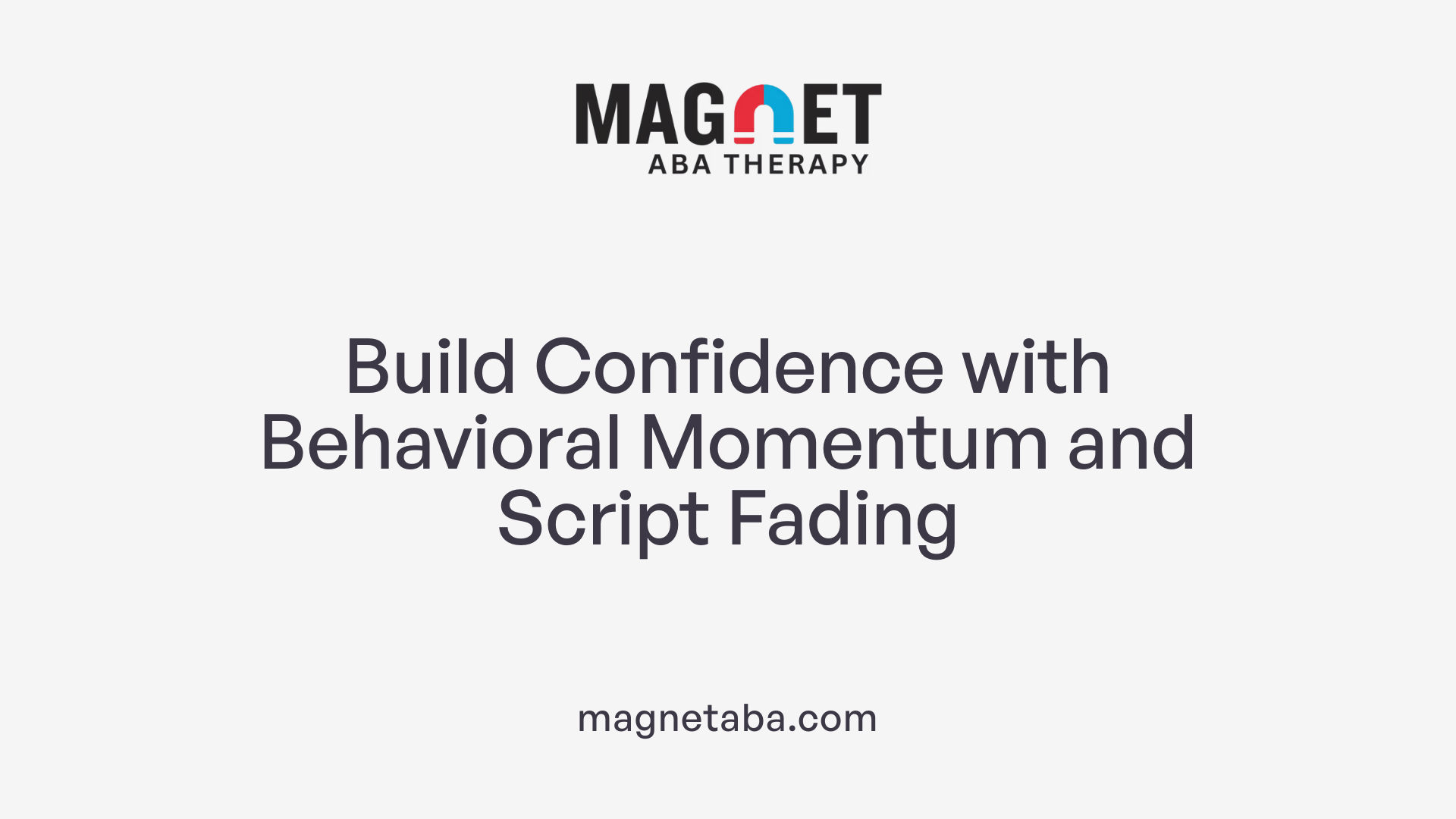Unlocking Effective Study Habits Through ABA Techniques
Applied Behavior Analysis (ABA) offers a structured, evidence-based approach to developing and reinforcing effective study habits. Rooted in understanding behavior, ABA leverages scientific principles such as reinforcement, modeling, prompting, and task analysis to create consistent, independent, and meaningful learning routines. This article explores the core ABA strategies that educators and learners can employ to foster productive study behaviors and build long-lasting habits.
Understanding Reinforcement Strategies in ABA
What are reinforcement strategies in ABA to foster effective study habits?
Reinforcement strategies form a core part of ABA, aimed at encouraging and strengthening behaviors that lead to successful studying and learning. These techniques are used to make desired behaviors more likely to occur again. For building effective study habits, reinforcement involves praising students or rewarding them with tangible items like tokens or access to preferred activities when they meet specific goals, such as completing homework, staying focused during lessons, or following instructions.
Visual aids and demonstration play crucial roles. For example, modeling study behaviors through videos or live demonstrations helps learners, especially visual learners, observe and imitate appropriate behaviors like note-taking, organizing materials, or asking for help. This process makes it easier for students to replicate positive learning habits.
Prompting, which involves giving cues or assistance, and the subsequent fading of these prompts help students develop independence gradually. For instance, a teacher might initially help a student start their assignment and then reduce assistance as the student begins to work independently.
In addition, applying reinforcement strategies in natural settings such as classrooms or home study sessions enhances the consistency and applicability of these skills. When students see reinforcement tied directly to their study environment, they are more likely to apply these habits across different contexts.
Behavior chaining is particularly useful for complex tasks, breaking down multi-step activities like organizing a desk or completing a project into smaller, manageable parts, each reinforced separately. Behavior contracts—formal agreements that specify behaviors, rewards, and consequences—can be motivating for older students, providing clear expectations and tangible incentives for maintaining productive study routines.
Overall, these reinforcement methods work together to establish and strengthen effective study habits, supporting learners in becoming more autonomous and motivated learners.
Strategies Used by ABA Therapists to Cultivate Study Skills

What strategies do ABA therapists use to develop effective study habits?
ABA therapists incorporate many practical, evidence-based methods to help children develop stronger study habits. These techniques focus on increasing attention, organizing tasks, and fostering independence.
One fundamental approach is reinforcement. By rewarding desired behaviors such as staying focused or completing a task, therapists encourage children to repeat these actions. Positive reinforcement, like praise or small rewards, makes it more likely that children will continue practicing good study behaviors.
Prompting and modeling are also essential. Therapists demonstrate how to complete tasks or use organizational tools, then gradually reduce help through prompting fading. This process helps children learn to perform independently over time.
Breaking tasks into smaller, manageable steps simplifies complex activities, making them less overwhelming. Visual aids like schedules and timers serve as guides, keeping children aware of what they need to do and when. Visual schedules act as visual prompts, clearly showing daily routines and study plans.
Timers are used to set specific periods for focused work, such as 25-minute sessions, which align with techniques like the Pomodoro Technique. These timed sessions help children build concentration and manage their study time effectively.
Structured routines and clear instructions provide a predictable environment that supports consistent study habits. When children know exactly what to expect and understand what is expected of them, they are more likely to stay engaged.
Self-monitoring tools, such as checklists or progress charts, encourage children to track their own behavior and work completion. This fosters awareness and responsibility, motivating children to stay on task.
In summary, ABA therapists utilize a combination of reinforcement, modeling, task breakdown, visual aids, timers, routines, and self-monitoring strategies. Together, these promote better focus, organization, and independence in study routines, laying a foundation for lifelong learning skills.
Applying ABA Principles to Enhance Study Routines

What is the ABA method of learning and how can it be applied to improve study routines?
Applied Behavior Analysis (ABA) is a scientific approach centered on understanding and changing behaviors through well-established learning principles. Its core involves analyzing the antecedents (things that happen before a behavior), the behaviors themselves, and the consequences that follow—the ABCs. This analysis helps identify what motivates or triggers certain behaviors, which can then be modified to encourage positive actions.
In terms of study routines, ABA methods can be particularly effective. For example, by breaking complex tasks into smaller, manageable steps—a process known as behavior chaining—learners can build skills gradually and confidently. Prompts such as visual aids or cues can support initial learning, and these prompts are gradually faded to promote independence.
Reinforcement plays a crucial role in ABA. Positive reinforcement involves rewarding behaviors, like completing a study session, with praise or small incentives. This increases the likelihood that similar behaviors will occur in the future. Consistent application of these strategies fosters better focus, reduces procrastination, and develops durable study habits.
In practical settings, setting specific, measurable goals paired with reinforcement systems—like tokens or points—can motivate students. Creating a structured learning environment free from distractions, coupled with visual schedules and clear routines, helps establish a predictable and conducive atmosphere for studying.
In summary, applying ABA principles to study routines involves analyzing motivations and behaviors, systematically teaching skills via step-by-step methods, and reinforcing positive behaviors. These strategies collectively promote sustained focus, effective learning, and the development of healthy study habits that last.
Foundational ABA Strategies for Effective Study Routines
 'Applied Behavior Analysis (ABA) offers several proven techniques that can be applied to improve study habits and classroom learning. These strategies facilitate independence, motivation, and mastery of skills, making study routines more effective and manageable.
'Applied Behavior Analysis (ABA) offers several proven techniques that can be applied to improve study habits and classroom learning. These strategies facilitate independence, motivation, and mastery of skills, making study routines more effective and manageable.
One of the core ABA methods is reinforcement, which involves rewarding desired behaviors to encourage their repetition. Positive reinforcement might include praise, tokens, or privileges for completing assignments or staying focused during study sessions. Negative reinforcement, on the other hand, removes an unpleasant stimulus, such as reducing distractions or noise, to promote concentration.
Prompting and fading are also essential. Prompts are cues or assistance provided to guide students toward correct responses or behaviors. These can include verbal hints, gestures, visual aids, or physical guidance. Over time, prompts are systematically faded—meaning their assistance is gradually reduced—to foster independence. A structured prompting hierarchy helps students transition from reliance on cues to performing skills independently.
Task analysis breaks down complex study tasks into smaller, manageable steps. For example, preparing for a test might be divided into steps such as reviewing notes, creating flashcards, and practicing questions. Chaining techniques then connect these steps sequentially, teaching each part until the entire task flows smoothly. This approach is especially useful for developing organizational skills and step-by-step procedures.
Visual aids, such as charts, pictures, or videos, support learning by providing clear and concrete references. For instance, visual schedules can outline daily study routines, helping students anticipate and prepare for upcoming tasks. Modeling, another effective tool, involves demonstrating the desired behavior—like showing how to organize a study desk or solve a math problem—so that students can imitate successful strategies.
When combined, these ABA strategies create a structured, supportive environment conducive to building effective and sustainable study routines. By systematically applying reinforcement, prompting, task analysis, and visual modeling, educators and caregivers can foster motivation, independence, and skill development in learners.'
Behavioral Techniques for Promoting Study Independence

How can extinction of undesirable behaviors be used to foster independent study?
Extinction involves withholding reinforcement for behaviors that are challenging or distracting, leading to their reduction over time. For example, if a student seeks attention through disruptive actions, ignoring such behaviors (while positively reinforcing appropriate responses) can decrease their occurrence. This process helps students learn that undesirable behaviors no longer result in the desired outcomes, encouraging more adaptive strategies to access attention or desired activities.
How do redirection and social script fading support independent learning?
Redirection is a technique where a teacher guides a student away from negative or disruptive behaviors toward positive activities or responses. For instance, if a student is disengaged or off-task, a teacher might redirect their focus to a task or a more appropriate behavior, fostering engagement and self-regulation.
Script fading involves practicing social scenarios with guided prompts and gradually reducing assistance to promote autonomous social interactions. For example, teaching a student to ask for help using a scripted phrase, then gradually encouraging independent requests as prompts are faded, builds confidence and social skills essential for learning in group settings.
What role do imitation and modeling play in developing independent study skills?
Modeling involves demonstrating desired behaviors or skills, which students then imitate. Teacher modeling, for instance, can show how to organize study materials or focus on tasks. Visual aids, videos, or live demonstrations serve as models that help students grasp new skills.
Imitation is fundamental for learning new behaviors, especially for children with autism or additional learning needs. By observing modeled behaviors, students can replicate effective study strategies, such as using visual schedules or following step-by-step instructions, ultimately fostering independence.
How can building behavioral momentum improve study routines?
Behavioral momentum refers to the strategy of starting with previously mastered or easier tasks to build confidence and engagement. For example, a student might begin with simple review questions before tackling more complex assignments. This approach can reduce frustration and increase motivation.
In practice, educators and caregivers can help students develop consistent routines by reviewing familiar content before introducing new or challenging material. This strategy encourages a positive mindset towards learning, making it easier for students to transition into focused, independent study sessions.
| Technique | Purpose | Implementation Examples |
|---|---|---|
| Extinction | Reduce disruptive behaviors | Ignoring attention-seeking actions, reinforcing appropriate responses |
| Redirection | Guide behavior toward positive alternatives | Withdrawing attention from disruptive behaviors to focus on acceptable activities |
| Script Fading | Promote social independence | Teaching requests or responses with gradual removal of prompts |
| Modeling & Imitation | Demonstrate skills | Showing how to set up a study space or complete tasks, then having students replicate |
| Building Momentum | Enhance motivation | Starting with familiar tasks before progressing to difficult ones |
Understanding and applying these behavioral techniques can significantly enhance a student's ability to study independently. Consistent reinforcement, guided practice, and strategic task sequencing not only foster skill development but also promote greater self-confidence and motivation for lifelong learning.
The Role of Systematic Instruction in Building Study Habits

How does structured learning environment support better study habits?
A structured learning setting provides a consistent and predictable framework that fosters focus and reduces anxiety among learners. In such environments, clear expectations and organized spaces help students develop routines that become automatic over time. This consistency enables learners to anticipate what comes next, making it easier to transition into study sessions and maintain attention.
By establishing designated areas dedicated to studying, free from distractions, students can better concentrate on their tasks. Visual aids, schedules, and clearly defined rules contribute further to a disciplined environment where positive behaviors are encouraged and reinforced.
Why is objective task breakdown crucial for effective studying?
Breaking down complex tasks into smaller, manageable steps is a central feature of systematic instruction. This method allows learners to focus on one component at a time, reducing overwhelm and increasing the chances of success.
For example, a student preparing for an exam might divide their study into sections such as reviewing notes, practicing problems, and summarizing key concepts. Each step is reinforced through positive feedback, encouraging progress and boosting confidence.
This approach aligns with behavior analysis principles by providing clear cues and reinforcement for each completed segment. Over time, it helps students develop self-regulation skills and a structured approach to learning.
How do consistent routines and cues enhance study habits?
Routines create a predictable pattern that signals to the brain that it’s time to engage in studying. Consistent start times, regular breaks, and pre-study rituals help establish habits that become automatic.
Using cues such as alarms, visual schedules, or specific gestures can prompt students to begin their study sessions. These cues serve as environmental triggers that reinforce routine behavior.
Additionally, fading prompts gradually reduce external cues, encouraging students to rely more on internal cues and self-motivation, which promotes independence.
What is the importance of gradual skill acquisition?
Learning new study techniques or content should occur gradually, allowing learners to build confidence and competence step-by-step. This phased approach involves initially providing extensive support and prompts, then slowly reducing assistance as the student demonstrates understanding.
Gradual skill acquisition minimizes frustration and prevents burnout, making the process more sustainable. It also ensures that skills are generalized across different contexts and maintained over time.
Overview of Systematic Instruction in Study Habits
| Strategy | Description | Benefit |
|---|---|---|
| Structured Learning Environments | Organized spaces with clear rules and visual aids | Better focus and routine formation |
| Objective Task Breakdowns | Dividing tasks into smaller, manageable parts | Increased success and confidence |
| Consistent Routines and Cues | Regular schedules and environmental triggers | Habit formation and independence |
| Gradual Skill Acquisition | Incremental learning with fading prompts | Long-term retention and skill generalization |
Integrating these elements of systematic instruction into study habits significantly improves performance and motivation. By providing predictable environments, breaking tasks down, establishing routines, and pacing skill development, students can develop effective, sustainable study practices that support academic achievement.
Integrating ABA in Educational Settings and Home Environments
Classroom applications and social skills training
In educational settings, especially in special education, Applied Behavior Analysis (ABA) provides a structured framework for teaching and behavior management. Teachers often incorporate ABA strategies such as systematic instruction, modeling, prompting, and reinforcement to support student learning. For example, teacher modeling involves demonstrating desired behaviors or skills and reinforcing students when they imitate or engage in these behaviors. Prompts—such as visual cues or verbal hints—are used initially to guide responses, with planned fading strategies to promote independence over time.
ABA techniques like Discrete Trial Training (DTT) are used to break down complex skills into manageable steps, enabling students to acquire skills sequentially. Pivotal Response Training (PRT), another ABA approach, emphasizes motivation and social engagement, encouraging behaviors like eye contact and requesting items, which lay the foundation for broader skill development. Moreover, Functional Behavior Assessment (FBA) helps identify triggers behind challenging behaviors, allowing educators to develop targeted interventions that promote positive social behaviors.
Social skills training through ABA often involves scripts, role-playing, and reinforcement to teach appropriate social responses and communication, facilitating better peer interactions.
Home routines and caregiver involvement
Implementing ABA in home environments complements school-based strategies and reinforces learning. Caregivers can use positive reinforcement—such as praise or rewards—to encourage desired behaviors like communication or daily living skills. Consistent routines help provide a predictable environment, reducing anxiety and promoting skill acquisition.
Caregivers can apply visual schedules at home, using pictures or symbols to outline daily activities. This helps children understand and anticipate routines, making transitions smoother and reducing challenging behaviors. For instance, a visual schedule for morning routines might include images for brushing teeth, dressing, and breakfast, helping nonverbal children express their expectations and participate actively.
Caregiver involvement is vital in ABA, executing reinforcement strategies, practicing social skills, and ensuring consistency across settings. Coaches or therapists often teach caregivers how to implement ABA techniques like prompting and fading, behavior contracts, and extinction procedures to address specific behaviors.
Visual schedules and reinforcement
Visual schedules are a core element of ABA that enhances understanding and independence. They use pictures, symbols, or written words to represent activities, enabling children to follow routines and reduce reliance on verbal instructions alone. Visual aids are particularly effective for autistic children and those with communication delays.
Reinforcement—the process of encouraging desired behaviors—is fundamental in ABA. Positive reinforcement involves rewarding behaviors to increase their likelihood, such as giving praise, tokens, or preferred activities. Negative reinforcement, which involves removing an unpleasant stimulus, can also promote compliance, like easing a demand after successful response.
In both school and home, reinforcement strategies should be consistent and individualized, aligning with each child's preferences and needs. Using a variety of reinforcers and ensuring timely delivery increases their effectiveness.
Adapting ABA strategies for different learners
Every learner is unique, requiring tailored ABA interventions. For children with different learning abilities or sensory sensitivities, strategies such as prompting, fading, or visual supports can be adjusted for optimal effectiveness.
For example, some children may benefit from more visual cues, while others need more physical prompts. Behavior chaining can be simplified or expanded depending on the child's capacity, ensuring manageable steps without overwhelming.
Similarly, reinforcement can be individualized—some children respond better to tangible rewards, while others thrive on social praise. Script fading, where social scenarios are practiced and prompts gradually reduced, helps build social confidence while respecting each child's comfort level.
In summary, ABA's versatile methods serve a broad range of learners and settings. When implemented thoughtfully, these strategies foster meaningful behavioral improvements, support communication development, and promote social and adaptive skills both inside classrooms and at home.
| Strategy/Technique | Application Area | Description | Additional Notes |
|---|---|---|---|
| Modeling | Classroom & Home | Demonstrating desired behaviors for imitation | Reinforced through praise or rewards |
| Prompting & Fading | All settings | Support responses with cues, then gradually reduce prompts | Ensures skill independence |
| Visual Schedules | Home & School | Pictorial or written routines for predictability | Enhances understanding and independence |
| Reinforcement | Behavior maintenance | Rewards to encourage desired behaviors | Individualized to preferences |
| Behavior Chains | Complex skill acquisition | Breaks down tasks into smaller steps | Facilitates learning of complex behaviors |
| Extinction | Behavior reduction | Withholding reinforcement to eliminate behaviors | Used carefully to prevent frustration |
| Teaching & Practice | Social skills development | Role-playing and scripted scenarios | Builds confidence and social skills |
By integrating ABA practices in both educational and home environments, caregivers and educators create a cohesive support system that promotes consistent learning and behavior growth. Adapting strategies to each individual's needs ensures that they are both effective and respectful of personal differences.
Harnessing ABA for Lasting Study Success
By incorporating ABA strategies such as reinforcement, modeling, prompting, and task analysis, educators, therapists, and learners themselves can establish effective, independent study routines. Systematic use of these evidence-based methods not only enhances focus and motivation but also promotes lasting behavioral change. As ABA principles are adapted for various environments—from classrooms to homes—they serve as powerful tools for cultivating lifelong, productive study habits, ultimately leading to improved academic success and personal growth.
References
- ABA Techniques: Strategies for Behavior Analysts - GSEP Blog
- 8 Study Strategies for the BCBA® Exam - Tackling the Test Series
- Strengthen Student Skills through ABA Practices - n2y Blog
- ABA Therapy Techniques and Usage - First Step Arkansas
- Page 3: Foundational Strategies - IRIS Center
- Autism Spectrum Disorder (Part 2): Evidence-Based Practices
- Iphepha 3: Izicwangciso eziliqili - Vanderbilt University
- Teaching Replacement Behaviors Resources - Inclusive ECE
- ABA Therapy | Dream Big Children's Center











